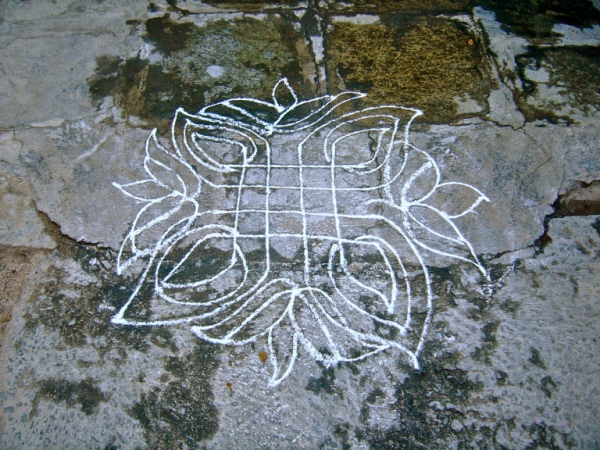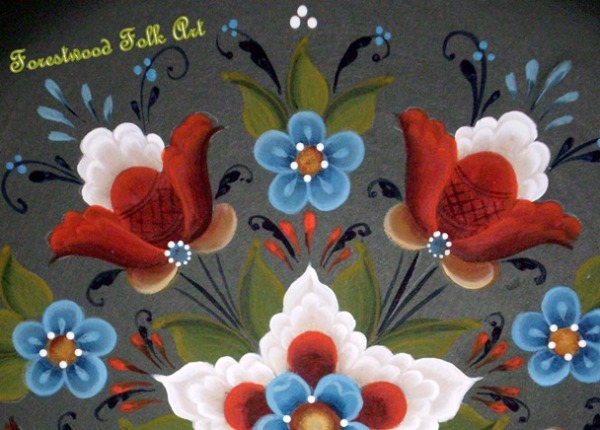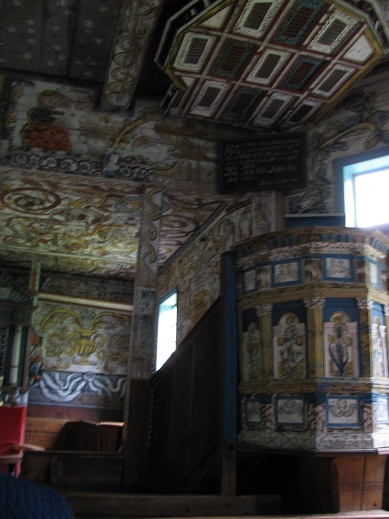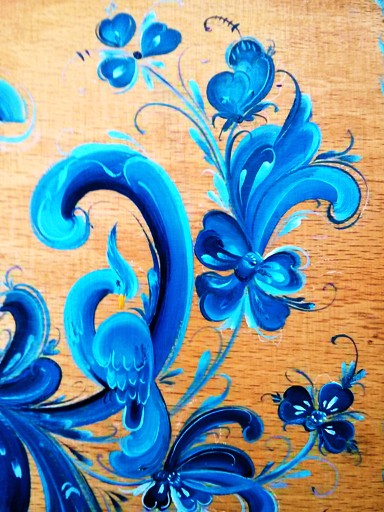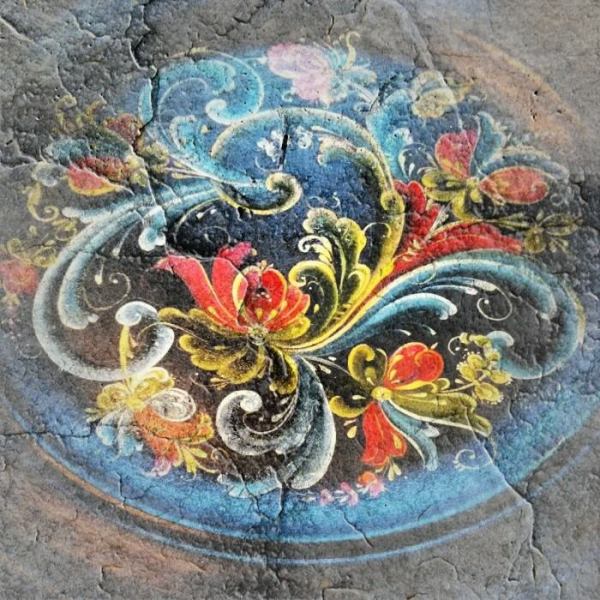Many people feel that they are not at all artistic. Yet there are many things you can do to create artistic flourishes or decorations, on objects in your world, with a few simple household tools and very little artistic technique. If you can hammer in a nail, you could paint a primitive, and delightful, border design.

A border can provide structure to a loose, flowing design. It will frame the design which pleases the eyes’ sense of order. Not only that but a line or motif border can direct the viewer’s eyes to the rest of the design, whilst still allowing for “breathing room” – negative space around the design itself. This, in particular, applies to primitive or folk art/ traditional art.

Beginners can easily create borders by combining a few basic strokes with dots made with the handle end of a brush dipped in paint, or press a series of dots with a Q-tip cotton bud, or a worn pencil eraser to form a four or five-petaled daisy.
Here are a few ideas:

- Elongate the dots made form dipping the handle of a brush into oval shapes to make flower buds.
- Place two dots of paint side by side, pulling each to a point, with a fine brush or brush handle, to form a heart. Use the chisel edge of a flat brush to make carefree straight lines. These irregular lines result in a more primitive look, less rigid and more free-flowing than lines carefully painted with a liner brush.


- Children can begin to develop an appreciation of border art by dabbling decorative edges on photo frames or the cover of study books. Cover the books with plain paper or card stock and arm the kids with a q tip or paintbrush as a “dotting tool.”
- Rule some lines in pencil as a guide and let them create patterns in rows across the paper with Q-tips or brushes. You will be surprised as what they come up with. They are limited only by their imagination. And you can even incorporate apply a bit of mathematics at the same time, teaching division skills.

Something to remember when painting strokes and border designs is to aim for a flowing design. Otherwise, the rhythm of the design will appear disjointed and the eye will not flow smoothly from one section of the design to another.

Decorate an object with one colour and then add a solid, contrasting colour border design

A solid contrast border colour can be further embellished with geometric shapes, dots, stripes or swirls.


As your confidence and ability grows, build up each row upon row, to form an intricate border designs, based on basic shapes and form such as can be seen in this preliminary sketch below.








